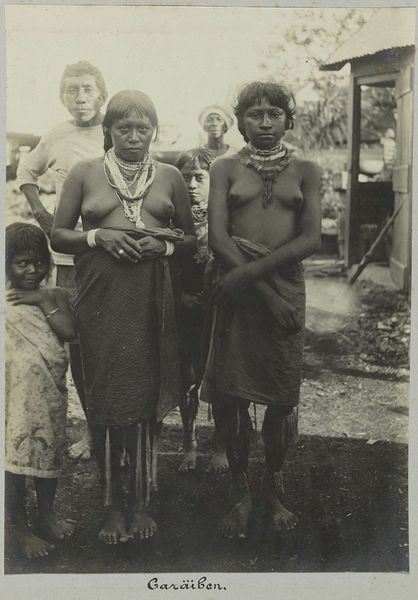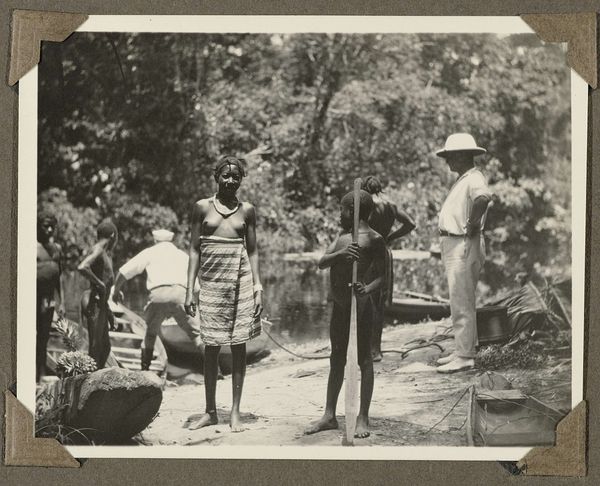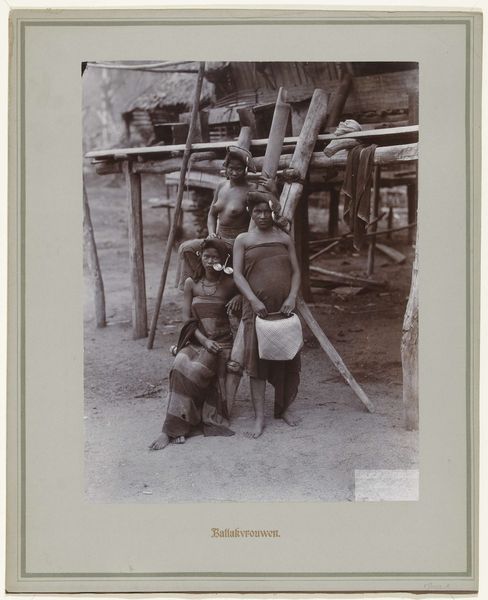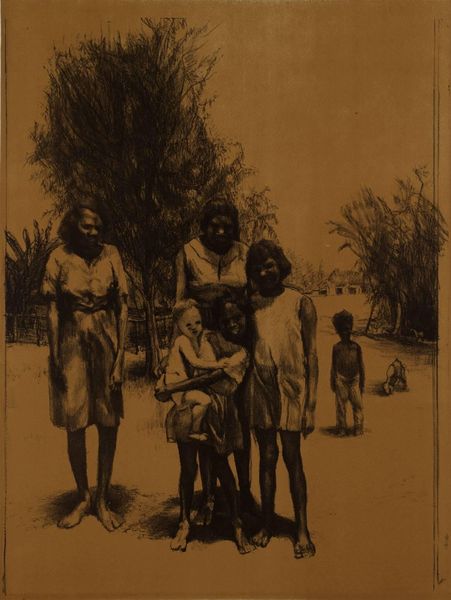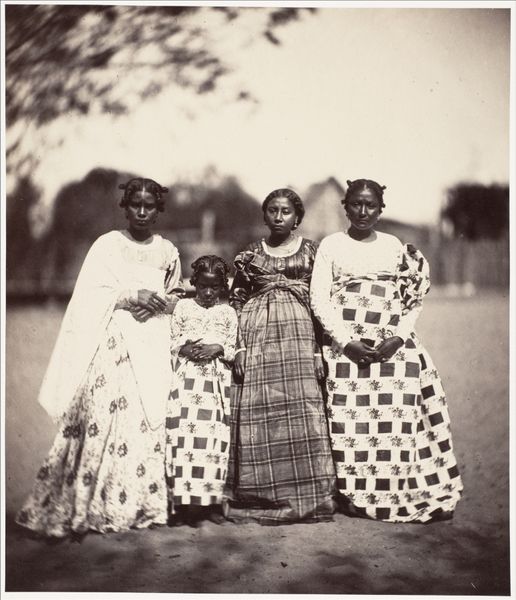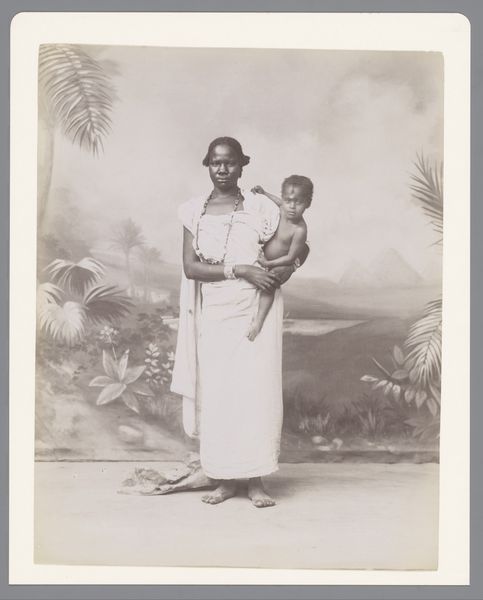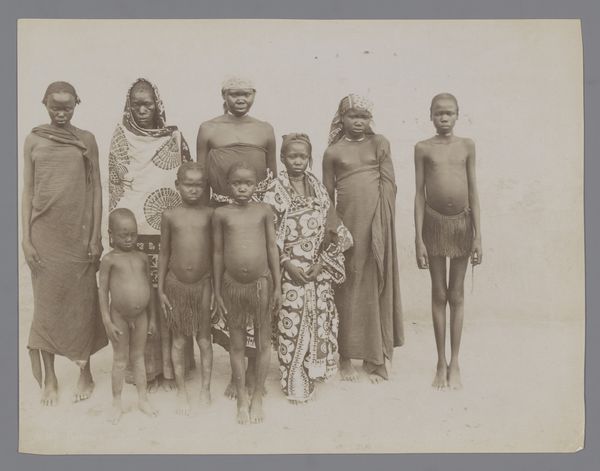
photography
#
portrait
#
african-art
#
street-photography
#
photography
#
historical photography
#
watercolor
Dimensions: height 157 mm, width 103 mm
Copyright: Rijks Museum: Open Domain
Editor: So, this is "Het kapsel van een Maronmeisje," a photograph taken by Hendrik Doijer sometime between 1903 and 1910. The composition is striking, focusing on two figures in the foreground while others stand further back. It seems to me that the central subject is the girl, but the photograph’s name clearly focuses on the woman's hairstyle. What’s your take? Curator: Indeed. The gaze and hairstyle invite closer inspection, yet we must recognize the historical lens through which Doijer captured this image. These Maroons, descendants of escaped enslaved Africans in Suriname, were often subject to exploitative representation by outsiders. How does Doijer's work perpetuate or perhaps challenge existing power dynamics? Editor: I see your point. The title itself, using language that others the subject, reflects that power imbalance. Do you see anything in the photograph's composition that might further emphasize the imbalance? Curator: Absolutely. The direct, almost confrontational gaze of the child challenges any easy exoticism. Consider the material conditions too – the setting, the clothing. Are they presented in a way that dignifies the community, or does it cater to a colonialist gaze? Editor: That's fascinating, especially thinking about the title versus the actual presence and expressions of the people depicted. Curator: Precisely! And this tension is crucial. It invites us to deconstruct not just what we see, but *how* we see. What can this photo tell us about identity and representation during that period? Editor: It makes me think about how important it is to acknowledge the history behind the work. I initially saw a simple portrait but realize the story is far more intricate. Thanks. Curator: My pleasure. Let's always remember, these artworks speak, but only if we are ready to listen critically and ethically.
Comments
No comments
Be the first to comment and join the conversation on the ultimate creative platform.



